Backyard Butterflies
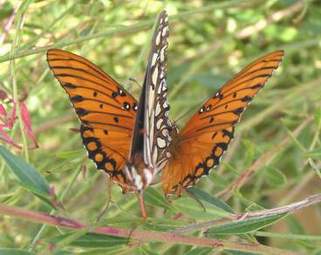
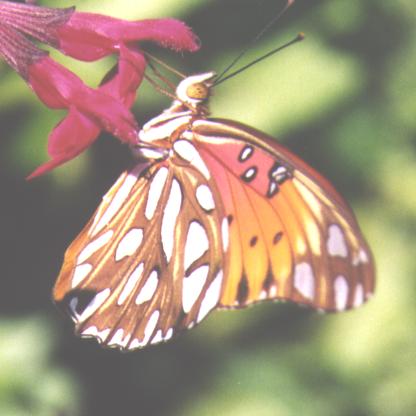
Gulf Fritillary
(Agraulis vanillae)
A beautiful bright orange butterfly, this one took to Purslane & Salvia.
Larval Host - Mostly Passion vines.
Nectar - Purslane, Thistles, Impatiens, Lantanas.
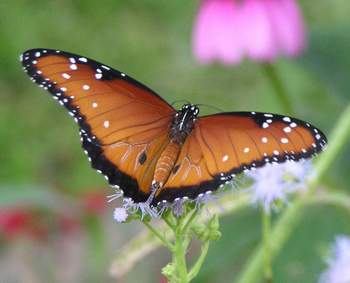
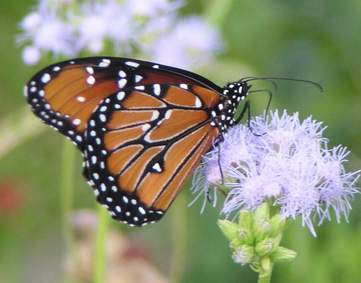
Queen
(Danaus gilippus)
The Queen butterfly here was feeding on perennial Ageratum.
Larval Host - Queens are one of the "Milkweed" butterflies, along with Soldiers and Monarchs.
Nectar Same as for Monarch, including Milkweed, Floss flower (annual Agerartum), Verbena, Zinnia, Prairie Blazingstart, Purple Coneflower, Sunflowers.
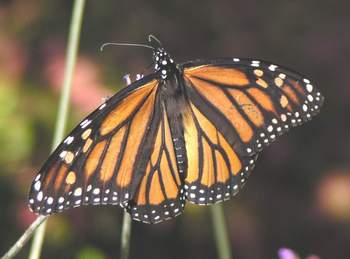
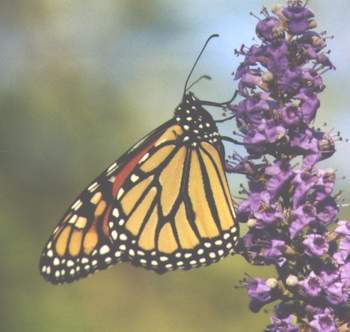
Monarch
(Danaus plexippus)
Here the monarch is feeding from a non native but Texas adapted tree, the "Chaste tree," or "Lavender tree." This is an aggresive plant reaching heights of 15 feet easily in a year.
Larval Host - Milkweed species.
Nectar - Milkweed, Lantana, Lilac, goldenrod, Cosmos, Zinnia.
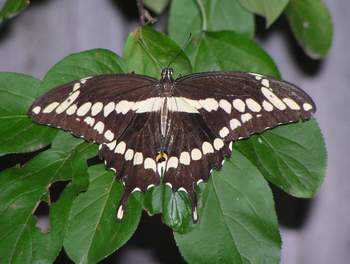
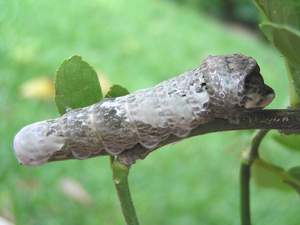
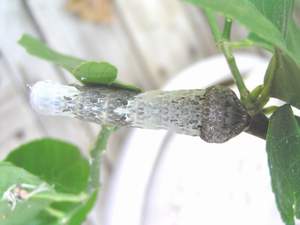
Giant Swallowtail
(Papilio cresphontes)
Found in open areas such as parks and gardens. This one kept trying to find large leaves to rest upon.
Larval Host - Citrus trees
Nectar - Azalea, Orange trees, Honeysuckle.
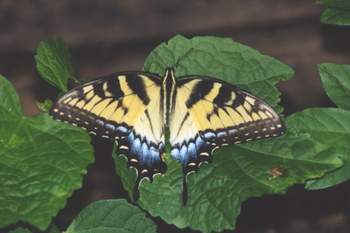
Eastern Tiger Swallowtail
(Papilio glaucus)
Here on the leaves of Native Perennial "Turks-cap."
Larval Host - trees such as cherry, cottonwoods, willow.
Nectar - Butterfly Bush (buddleia davidii), butterfly weed, Lantana, lilac.
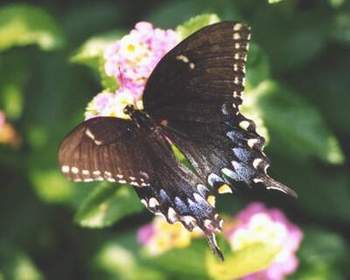
Eastern Tiger Swallowtail
(Papilio glaucus)(Black form)
This dark form of the Tiger Swallowtail just loved the Lantana. She spent most of an afternoon visiting this as well as a few other plants around the garden.
Larval Host - trees such as cherry, cottonwoods, willow.
Nectar - Butterfly Bush (buddleia davidii), butterfly weed, Lantana, lilac.
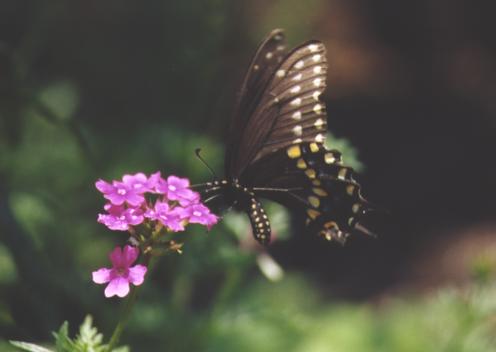
Black Swallowtail
(Papilio polyxenes)
Similar to the Black form of the Eastern Swallowtail, and also enjoying lantana.
Larval Host - Carrot family, parsley, dill.
Nectar - Lantana, phlox, clover, butterfly weed, thistle.
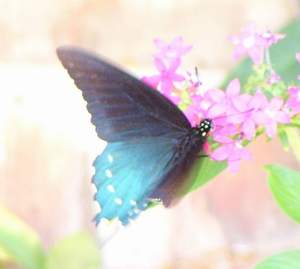
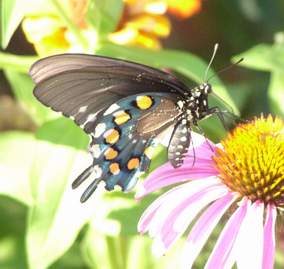
Pipevine Swallowtail
(Battus philener)
Here feeding from Penta & Purple Coneflower (Echinacea purpurea).
Larval Host - Species of Pipevine.
Nectar - Buddleia, Lilac, Pentas, Petunias & Azaleas.
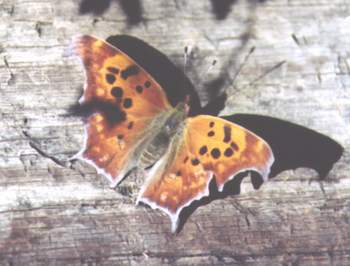
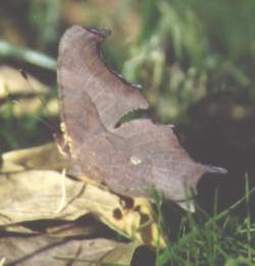
Question Mark
(Polygonia interrogationis)
This one was warming up on the sunny railway ties in the morning. These Butterflies migrate and over-winter in parts of North America. They may make use of roosting boxes if provided as well as wood piles.
Larval Host - Hackberrys, Elm's, Nettles.
Nectar - Do not take nectar but instead prefer rotten fruit and tree sap as well as animal scat
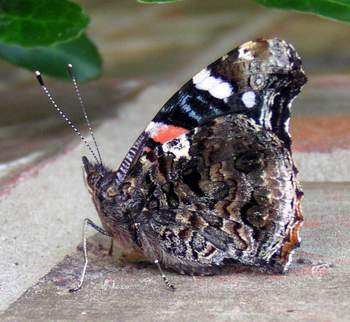
Red Admiral
(Vanessa atalanta)
Red Admirals, along with several other species of butterfly do not feed so much on flower nectar but get their moisture and nutrients from things like rotting fruit, tree sap & wastes such as dung instead. A plate of rotting fruit, some beer and yeast will attract this kind of butterfly.
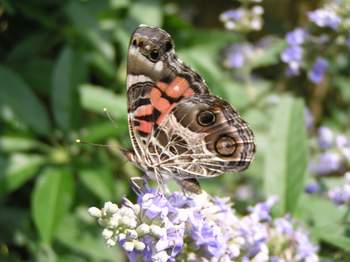
American Lady
(Vanessa virginiensis)
Feeding on "Chaste Tree" (Lavender Tree)
Larval Host - Everlasting (Anaphalis, Gnaphalium, Antennaria)
Nectar - Aster, Buddleia, Marigold, Goldenrod.
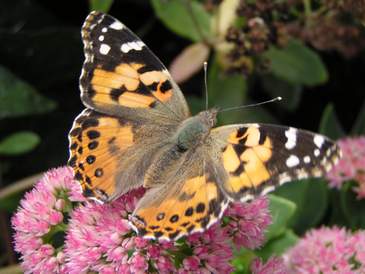
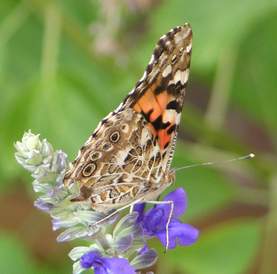
Painted Lady
(Vanessa cardui)
Very similar to the American Lady, but with more "eyes" on the underside of the hind wing.
Feeding here on Salvia "Indigo Spires"
Larval Host - Thistle, Mallow, Hollyhock.
Nectar - Cosmos, Thistle, Aster.
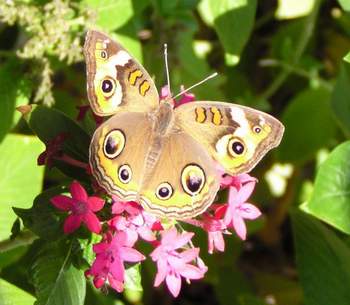
Common Buckeye
(Junonia coenia)
Larval Host - Plantains, toadflax, Snapdragons
Nectar - Aster, Chicory, Knapweed, Coreopsis.
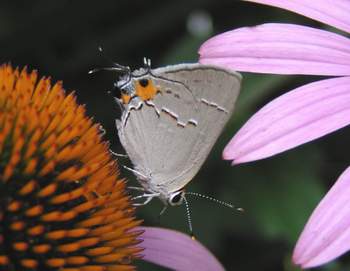
Gray Hairstreak
(Strymon melinus)
Seen mostly on my Coneflowers. They are very restless and you have to be quick with the camera!
Larval Host - Mallows and Hibiscus family, also clover.
Nectar - Coneflowers, Milkweeds, clovers, Goldenrod.
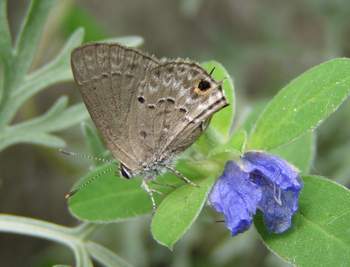
Mallow Scrub Hairstreak
(Strymon istapa)
This Hairstreak is north of its usual range of southern Texas but some years will wander to the northern counties. Seen here on "Blue Daze"
Larval Host - Mallows
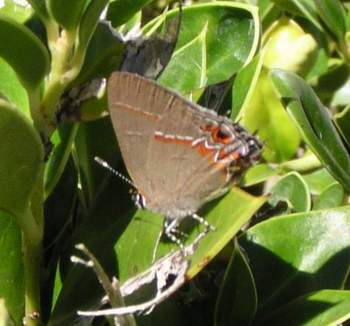
Dusky-blue Groundstreak
(Calycopis isobeon)
The Dusky-blue's range is the Southern half of TX but this one was feeding from flowers in my garden in North central Texas. Some years they obviously wander north. They will also occasionaly hybridize with the Red-banded Hairstreak found in the Eastern US, west to Central TX.
Larval Host - Rotting leaves for both butterflies.
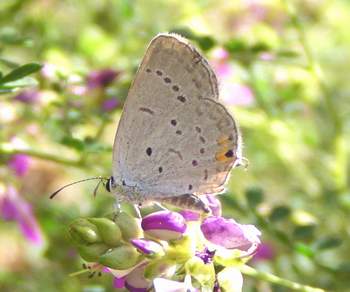
Eastern Tailed-blue
(Everes comyntas)
A common Eastern butterfly, visiting gardens, meadows and parks. Here it's feeding from "Black Dalea".
Larval Host - Species of legumes.
Nectar - Legumes, Black Dalea.
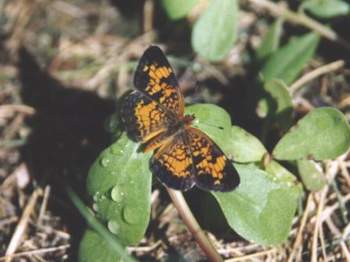
Pearl Cresent
(Phyciodes tharos)
Seen here on annual Perslane, they seem to like it close to the ground.
Larval Host - Aster
Nectar - Aster, Composites such as Gloriosa daisy (Rudbeckia hirta), Thistle.
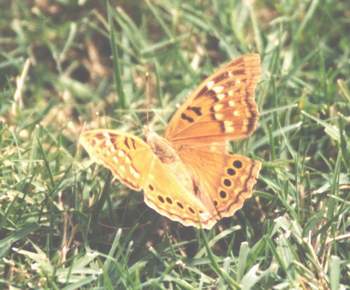
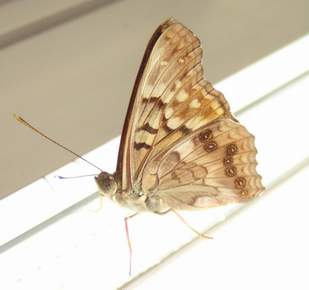
Tawny Emperor
(Asterocampa clyton)
Part of the "Emperor" group, these butterflies tend to land on humans as apposed to flowers as they are attracted to the salt in the skin.
Larval Host - Hackberrys
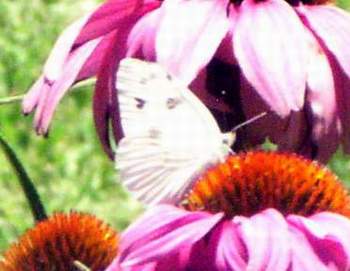
Checkered White
(Pontia protodice)
Feeding on Coneflower.
Larval Host -Mustard family, Cabbage, Turnip, Beeplant (Cleome).
Nectar - Coneflower (Echinacea purpurea), Butterfly weed, Aster, Centaury.
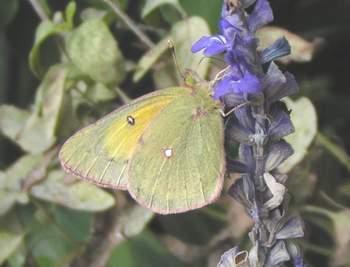
Orange Sulphur
(Colias philodice)
Feeding on "Indigo Spires" Savia
Larval Host - Clover, Legumes, Alfalfa.
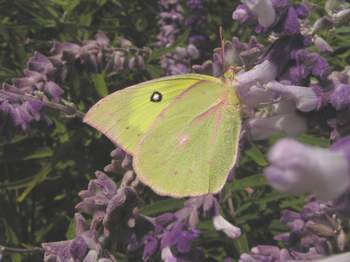
Southern Dogface
(Colias cesonia)
Feeding on Mexican Bush Sage
Larval Host - Clovers, Legumes, Indigo bush.
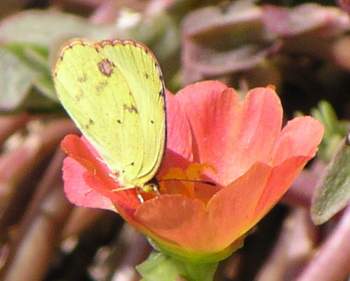
Little Yellow
(Eurema lisa)
This is a small, fast & low flying butterfly, here feeding on Purslane.
Larval host - Cassia (Partridge pea, Sensitive pea)
Nectar - Purslane.
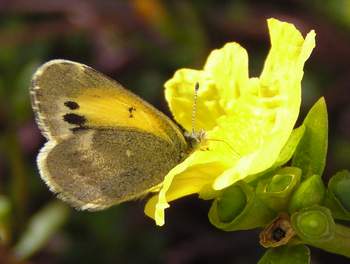
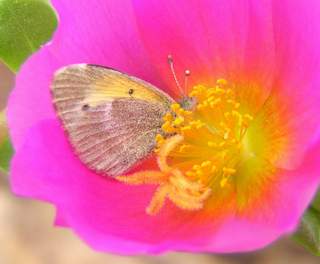
Dainty Sulphur
(Nathalis iole)
A tiny butterfly, yellow and olive green in color, both feeding on purslane.
Larval/Nectar - Aster family
Skippers
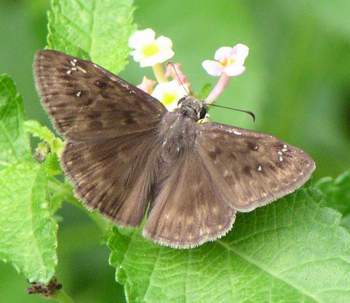
Horace's Duskywing
(Erynnis horatius)
On Lantana.
Larval Host - Oak species - "Mulenberg's, Gambel, Texas".
Nectar - Blue Salvia, also Lantana. Found along woodland edges and clearings.
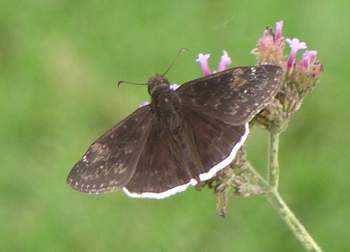
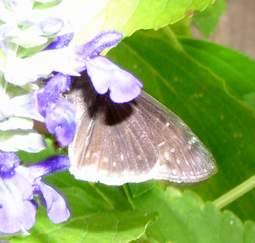
Funereal Duskywing
(Erynnis funeralis)
Here on both "Verbena" & "Indigo Spires Salvia." Similar to the Zarucco Duskywing but with brighter white fringe.
Larval Host - Legumes
Nectar - Salvia's, Verbena.
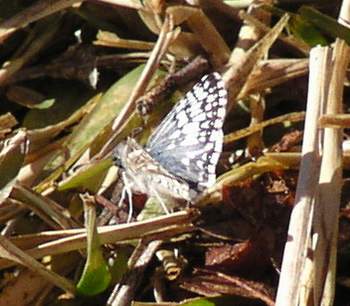
Common Checkered-Skipper(Pyrgus communis)
The most common skipper in North America and flies all year in southern regions. Also essentialy the same as the White Checkered-Skipper (Pyrgus xanthus) found in hot and dry regions of the Southwest.
Larval Host - Mallows, Hollyhocks.
Nectar - Asters, Fleabane, Shepherd's Needle, Knapweed.
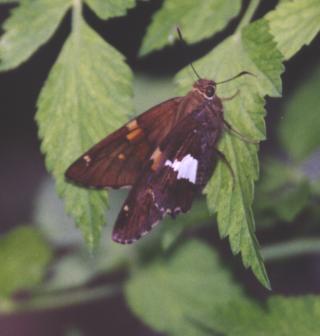
Silver-spotted Skipper
(Epargyreus clarus)
A common garden Skipper, this one is always seen on my wisteria vine laying eggs.
Larval Host - Wisteria, Locust, licorice.
Nectar - Honeysuckles, Butterfly weed, zinnias, joe-pye-weed.
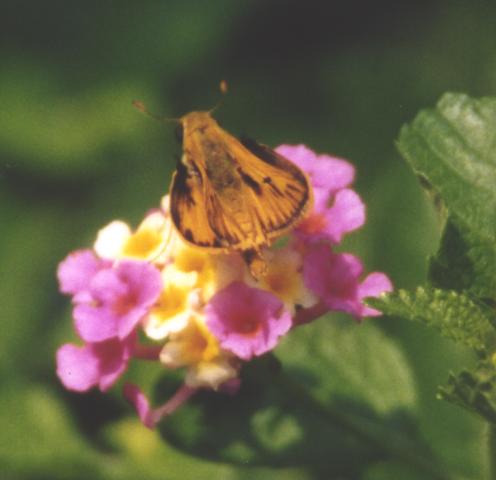
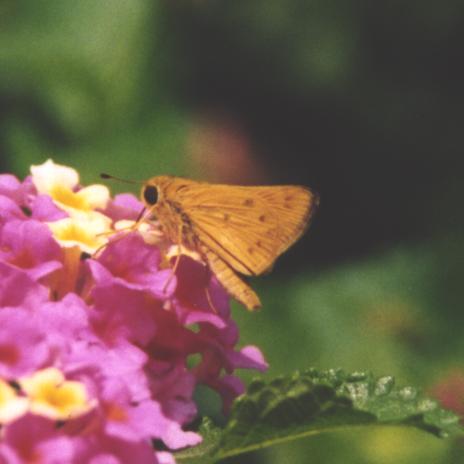
Fiery Skipper
(Hylephila phyleus)
A nice bright skipper, often seen with Whirlabout and Sachem skippers, is visiting lantana.
Larval Host - Grasses such as Bermuda and crabgrass.
Nectar - Lantana, Aster, Marigold.
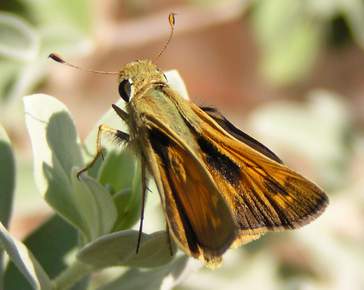
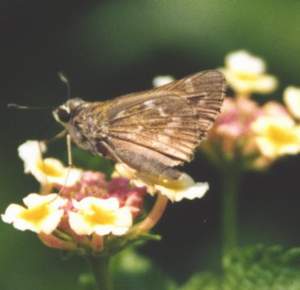
Sachem
(Atalopedes campestris)
Seen here on the lantana alongside the Fiery Skipper above.
Larval Host - Bermuda, crab grass.
Nectar - Aster, Butterfly weed, Lantana, Marigold, Buttonbush.
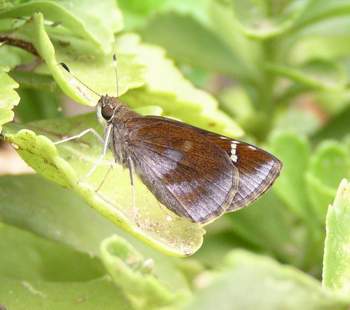
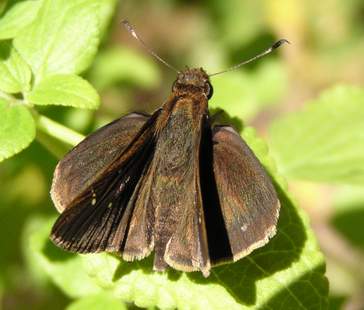
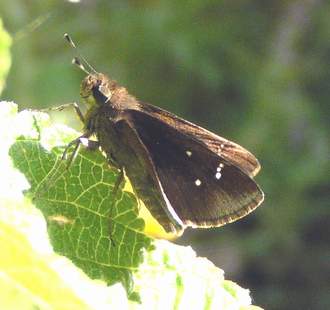
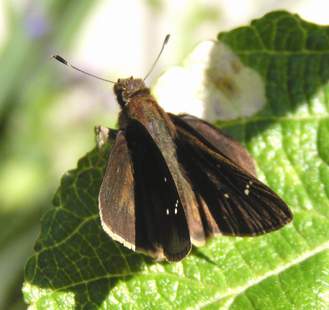
Clouded Skipper
(Lerema accius)
Basking on Sedum & lantana. Often perch on low plants.
Larval Host - Weedy Grasses.
Moths
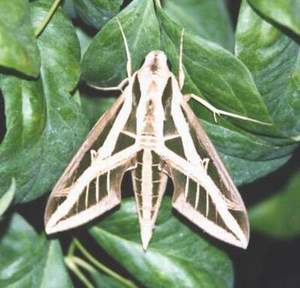
Banded Sphinx Moth
This 3 inch Hummingbird Hawk Moth was perched during the day on a Nandina plant growing by my pond. It sat perfectly still while I rearranged the leaves around him to take the photo!
Larval Host - Purslanes, Portulcas, Evening primrose.
Nectar - Dianthus, Salvia, Portulaca.
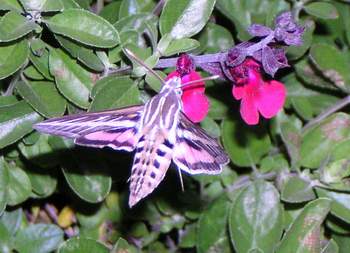
White-lined Sphinx Moth
(Hyles lineata)
I managed to get this photo at dusk with a flash while it fed from a Salvia plant. I just spotted its movement and realized what it was!
Larval Host - As above.
Nectar - As above.
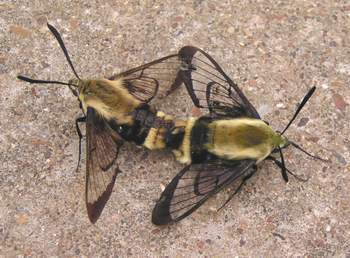
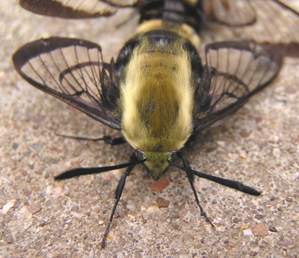
Snowberry Clearwing moths
(Hemaris diffinis)
This pair just happened to land on the driveway in the middle of the day and are known as day-flying moths.
Return to -
Top
Gardening for Wildlife
Gardening for Birds - Gardening for Hummingbirds - Gardening with Solitary Bees
A Garden Pond
© Copyright 2025, All rights reserved. 34464